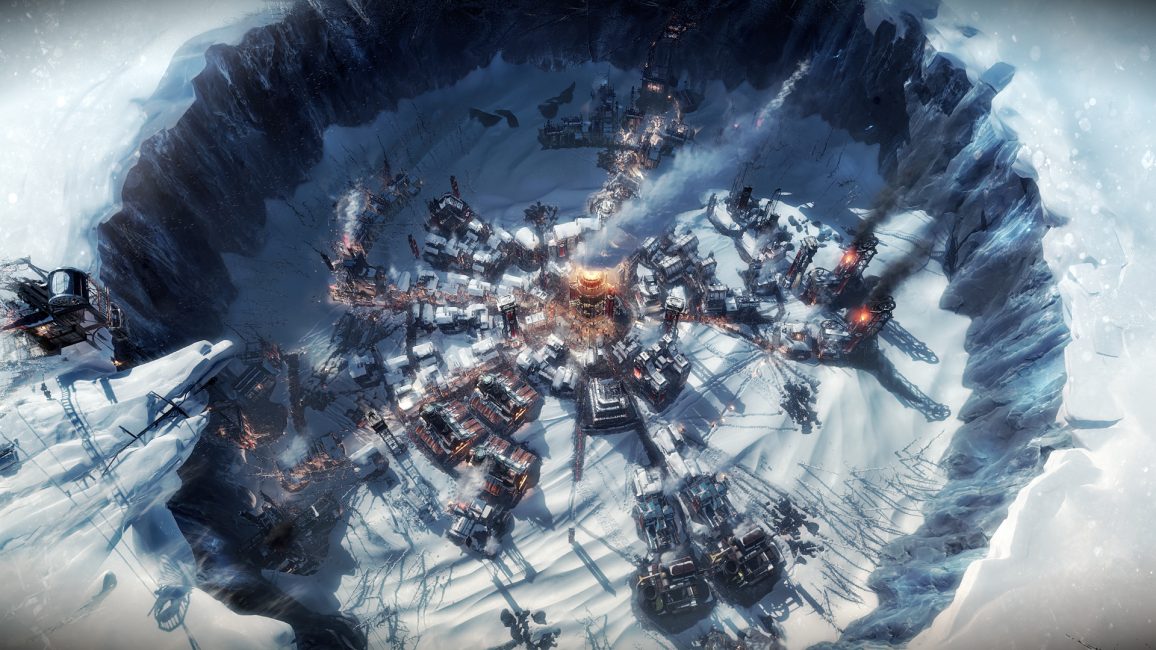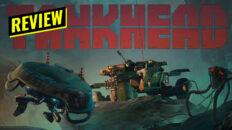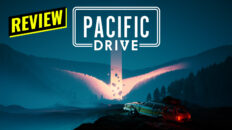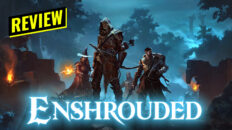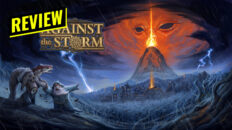Developer: 11 bit studios
Publisher: 11 bit studios
Reviewed on: PC
Code Received.
Frostpunk is a test of your moral resolve wrapped around an intuitive city builder. Much like your city slowly grows around the warm glow of your generator, so do the consequences of your decisions. Each choice is presented with shades of grey, either costing precious resources or the satisfaction of your people. So while Frostpunk may seem like a steampunk themed city builder on the surface, it wastes no time subverting those expectations.
Frostpunk‘s first subversion is it’s setting, taking place in an alternate history as opposed to a possible future. The world began to freeze sometime during the 1800s and the events of the game unfold sometime around the dawn of the 20th century. Not only is this an alternate history in terms of climate, but also in technology. Towering heat generators feast on coal as cities grow around them, and massive four-legged automatons help workers with their daily tasks. There’s even allusions to people like Nikola Tesla in the little bits of lore you find along the way. However, the story of the world at large is only used as a backdrop. The real story takes place in your crater, its tall walls of ice an ironic respite from the unrelenting blizzard above.

Nights are long in the crater, both for you and your denizens. Much like the real world, your people only work during the day and rest at night. This leads to long stretches of little progress. Thankfully the game provides you with options to alleviate this. You could simply speed up the clock and fast forward to morning. This solves the real-world boredom, but you’re still not making any in-game progress. You may be tempted to open up the game’s Book of Laws and force your people to work 24 hour shift. It’s hard out here on the tundra, so we all have to pull our weight, right? That’s certainly a sentiment shared by some, but not everyone will be happy about it. You see, in Frostpunk your people’s disposition is just as important as your stock piles of wood and food.
The Book of Laws is a reflection of who you are a leader, or Captain as your people call you. As events unfold and life gets tougher your people will turn to you to enact laws and make the hard decisions on how to manage the city. These decisions have an impact on your Hope and Discontent meters, and your goal is keep them in balance. For instance, they may ask you to help house the homeless. You can choose to house only those you can currently afford to house and get a small boost to Hope, but if you manage to house everyone the impact could be substantial. However, in order to afford the cost you may have to force your people to work over time. Your people’s Hope will grow, but so will their Discontent because of the long work hours. If either of these meters reaches the breaking point you will be banished from your city and the game will end.
While this system generally adds an interesting layer to what would otherwise be a run-of-the-mill city builder, it isn’t without it’s flaws. One persistent complaint I have is that you cannot repeal any laws you enact. In a real-world scenario certain things like mandatory 24 hour work days or using children to bolster the work force could be undone after the immediate need is met. However, because The Book of Laws works more like a tech tree, where each decision locks you onto a set path, a typical “enact and repeal” system isn’t possible. This leads to a level of permanency that doesn’t feel realistic. Compound that with a late-game scripted event that has the possibility to completely derail an otherwise good game, and I can’t help but feel like the Hope and Discontent meters are being used unfairly.

The actual city building in Frostpunk is rather satisfying. The expanding “pinwheel” layout plays well into the desire to make a city that looks pleasing, even at the expense of function. Managing the cold is a major consideration when building and choosing upgrades as cold workers are unhappy workers. A robust tech tree and heat map overlay make dealing with cold a breeze. The tech tree is also well thought out, providing satisfying progression throughout the game’s several scenarios. Learning how to balance which technologies to prioritize is just as important as remembering when milestone moments occur.

All of these elements tie into the game’s presentation, which is one of hopelessness; a bleak world where even the slightest ray of sunshine is to be clung to with dear life. The hopelessness of the situation is layered on pretty thick and much like 11 bit’s previous game This War of Mine, Frostpunk appeals to your humanity to add emotional weight to your decisions. And while This War of Mine succeeded in this by taking a micro approach, Frostpunk‘s macro approach falls a little flat. With so many citizens its difficult to get attached to any particular one and the few times it tries to get personal it uses generic art and scenarios to do so. When things get real bad and people start dying left and right, my typical reaction was “fine, less mouths to feed” rather than “these poor souls”. It’s a shame because developing more personal attachments could have led to more memorable scenarios. As it stands everything feels very scripted, and once you’ve seen it for the first time your choices are driven more by efficiency than emotion.
Currently Frostpunk offers three authored scenarios to play through, but lacks a random map or any type of never ending “survival” mode. The three scenarios provide unique tasks to complete along the way and their difficulty scales considerably on higher difficulties. In order to see everything each mode offered I had to first play them on the easiest difficulty. This is mostly do to the brutal scripted events that pop up at certain intervals. However, you can adequately prepare for them once you know they’re coming. While I wish there was a randomly generated “never ending” mode, what’s here can provide a lot of entertainment. That is as long as you don’t mind replaying the same scenarios over again at higher difficulties.
I wish Frostpunk provided more of an impact, especially in comparison to This War of Mine. However, as a standalone city builder, it is quite competent and provides enough unique twists to feel fresh. It’s handful of scenarios provide hours of content even if the novelty wears off after the first few playthroughs. I’ll be going back to Frostpunk just for the setting alone, I just wish I was drawn to it for the reasons it wants me to be.
Performance
Frostpunk requires a considerably powerful PC to play at the maximum settings. I had no trouble with my main review PC listed below running at 1080p. However, I did run into some performance issues on a medium end system during the late game when your city gets big and the screen gets busy. Just make sure you definitely meet the minimum specs on this one.
[full_width]PC Specs:Windows 10 Pro 64-bit
Intel Core i7-4790K 4.0GHz
16GB RAM
GeForce GTX 980 Ti 6GB VRAM
Samsung EVO 850 SSD[/full_width]


